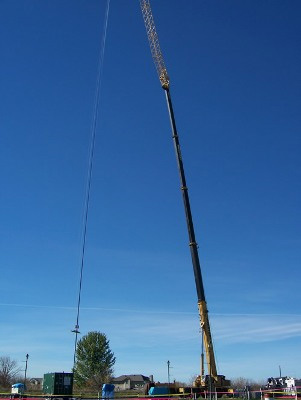 One of the proposed methods for getting payloads and people into space at a lower cost is via a method that sounds like science fiction: the space elevator. The prospect of an elevator that takes cargo into space may sound like fiction, but NASA is investing heavily into research to fund the project.
One of the proposed methods for getting payloads and people into space at a lower cost is via a method that sounds like science fiction: the space elevator. The prospect of an elevator that takes cargo into space may sound like fiction, but NASA is investing heavily into research to fund the project.
NASA has been holding an annual competition to find robotic technology that can be powered wirelessly to enable a robotic climber to ascend the cable that would be used for the space elevator. The elevator would consist of a cable that would need to be placed at the equator and a cable would be deployed thousands of kilometers into space. The cable would be kept taunt by the centrifugal force of the Earth as it spins.
The NASA competition is called the Power Beaming Challenge. The challenge requires robotic climbers to scale the cable that are powered from the ground. The total prize money put up for the competition is $2 million. The money was set to be handed out in two increments. The first would go to any robotic crawler that was able to ascend a 900 meter cable that was suspended from a helicopter at a speed of faster than 2 meters per second.
The money set aside for this feat was $900,000. The larger portion of the money totaling $1.1 million would be given to the team whose crawler could ascend the cable to the top at speeds over five meters per second.
The most recent competition was held and a team called LaserMotive was able to ascend the full 900 meter cable length at a speed of 3.7 meters per second, claiming the $900,000 prize. The next day the LaserMotive team was able to fully ascend the cable at a faster speed of 3.9 meters per second, well short of the 5 meter per second mark to claim the remaining $1.1 million in prize money. LaserMotive was the only team out of the three competing that was able to fully scale the cable.
Other methods of propulsion for climbers are also being studied including rhythmic jerking.
Editors' Recommendations
- Why the moon needs a space traffic control system
- Watch SpaceX practice an emergency escape from its Crew Dragon capsule
- Stanford’s shape-shifting ‘balloon animal’ robot could one day explore space
- NASA asks for the public’s help to design a robot for digging on the moon
- SpaceX and NASA still set for historic May mission despite coronavirus


